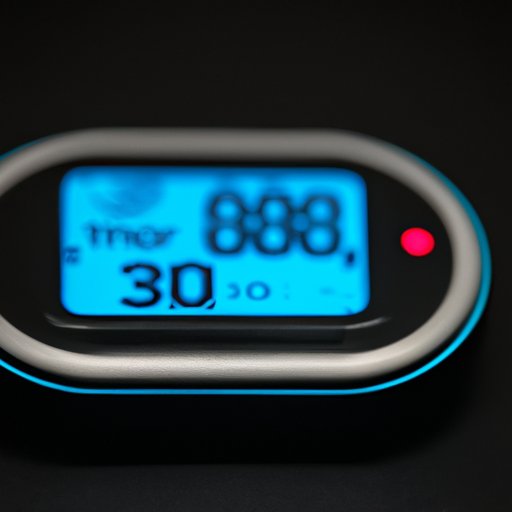Introduction
A pedometer is a small device that measures the number of steps you take. It is typically worn on the waist or hip and tracks your movements using a variety of technologies. The data collected by the pedometer can be used to calculate your distance traveled and provide insights into your overall activity level. In this article, we will explore how does a pedometer work and what benefits it offers.
Step-by-Step Guide to Understanding How a Pedometer Works
In order to understand how a pedometer works, it is important to first explore the technology it uses. Pedometers generally rely on either accelerometers or gyroscopes to measure your movements. An accelerometer is a device that measures acceleration, while a gyroscope is a device that measures angular velocity.

Exploring the Technology of Pedometers
An accelerometer is a device that measures linear acceleration along three axes: up/down, side-to-side, and front/back. When you walk, your body produces a force in each of these directions. By measuring the magnitude and direction of this force, the accelerometer is able to determine whether you are walking, running, or standing still. This information is then used to calculate the number of steps taken.
Gyroscopes measure angular velocity, or the rate at which an object rotates around an axis. This information can be used to detect changes in direction, such as when you turn around. By combining data from both an accelerometer and a gyroscope, a pedometer can accurately measure the number of steps taken and the distance traveled.
An Introduction to Pedometers and Their Functionality
Pedometers come in a variety of shapes and sizes, but all have one basic purpose: to track your activity level. Most pedometers also offer additional features, such as calorie tracking, heart rate monitoring, and goal setting. Some even allow you to connect to other devices, such as your smartphone or fitness watch.
To get started with your pedometer, you’ll need to set it up according to the manufacturer’s instructions. This usually involves entering your personal information, such as your height, weight, and age, as well as selecting any additional features you’d like to use. Once your pedometer is set up, you’re ready to start tracking your activity level.
How to Monitor Your Activity Level with a Pedometer
Once your pedometer is set up, you can begin tracking your activity level. To do this, simply wear your pedometer whenever you are active. The device will then track your movements and record the data for later analysis.
You can then review your data to get a better understanding of your activity level. Most pedometers will display your total number of steps taken, as well as the distance traveled and calories burned. You can then use this information to set goals and track your progress over time.

The Benefits of Wearing a Pedometer
Wearing a pedometer can offer several benefits, including increased motivation to exercise and improved activity tracking. By seeing how many steps you take each day, you can set goals and track your progress towards achieving them. This can be a great way to stay motivated and on track with your fitness goals.
Additionally, a pedometer can help you monitor your activity level more accurately than other methods. For example, if you are trying to reach a certain number of steps per day, a pedometer can give you an accurate count so you know exactly how much activity you are doing.

How Pedometers Track Steps and Calculate Distance
Pedometers use a combination of accelerometers and gyroscopes to track your steps and calculate distance. As you move, the accelerometer measures the force produced by your body and the gyroscope measures the rate at which you are changing direction. These readings are then combined to create an accurate count of the number of steps taken and the distance traveled.
In addition to step counting, some pedometers also feature a step counting algorithm. This algorithm uses data from the accelerometer and gyroscope to estimate the number of steps taken even when the user is not walking. This can be useful for activities such as cycling or swimming, where the motion of the body is not as easily detected.
Conclusion
Understanding how a pedometer works can help you make the most of your fitness goals. By tracking your movements and providing accurate data, a pedometer can help you stay motivated and on track with your activity level. With the right knowledge and tools, you can use a pedometer to improve your overall health and wellness.
(Note: Is this article not meeting your expectations? Do you have knowledge or insights to share? Unlock new opportunities and expand your reach by joining our authors team. Click Registration to join us and share your expertise with our readers.)
